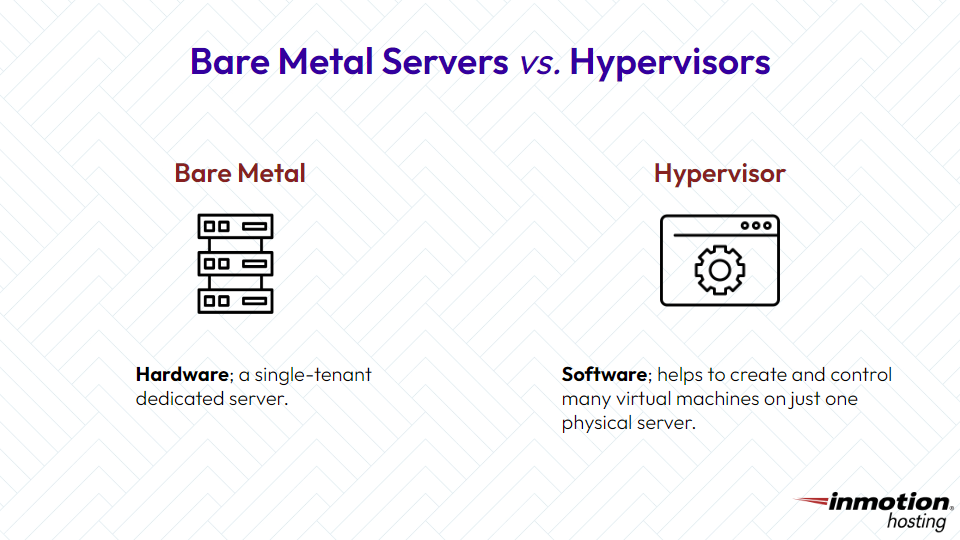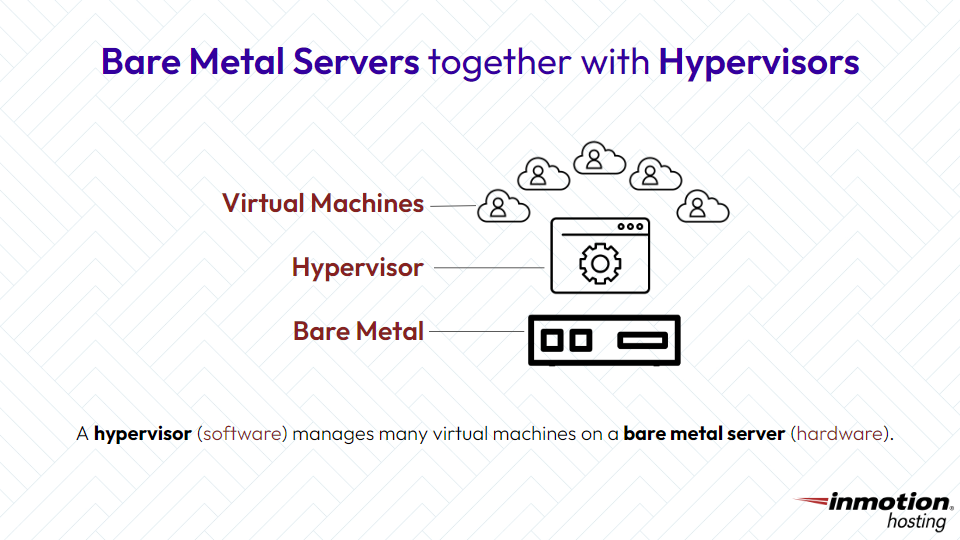The phrases “bare metal servers” and “hypervisors” describe two important parts in the world of virtualization.
It’s important to understand that these terms represent physical entities (a bare metal server) and a software layer (a hypervisor).
In this article, we’ll review what a bare metal server is and what a hypervisor is, and then we’ll explain how the two can work together.
Bare Metal Servers: A physical server
The term “bare metal” refers to a physical server with tangible components such as RAM, CPU, network cards, and more. In this configuration, the operating system communicates directly with these hardware elements, optimizing performance and resource utilization.
Take a look at our bare metal servers to understand that these are physical servers with tangible components such as RAM, hard drives, and Intel processors/cores.
Performance
Bare metal servers, stripped of a virtualization layer, excel in raw performance. With direct access to components like RAM and CPU, they are ideal for high-performance applications such as databases and real-time analytics.
Security
In security-sensitive environments, bare metal servers are preferred due to the absence of an intermediary layer between the hardware components and the operating system, thereby reducing the attack surface.
To learn more about bare metal servers, check out our what is a bare metal server? article.

Hypervisors: A software layer
On the other hand, hypervisors aren’t physical things; they are software layers that create a separation between hardware components and the operating system. This separation makes it possible to create and manage multiple virtual machines, each running its own operating system.
Flexibility and Isolation
Hypervisors provide flexibility by allowing the simultaneous operation of multiple virtual machines with different operating systems. This is valuable for testing environments and scenarios requiring isolation between workloads.
Resource Sharing
Unlike bare metal servers, hypervisors enable resource sharing among multiple virtual machines, offering a cost-effective solution where resource efficiency is prioritized over raw performance.
Ease of Management
Hypervisors offer a user-friendly interface for managing virtual machines, making them suitable for development, testing, and environments requiring rapid deployment and scalability.
To learn more about hypervisors, check out our what is a hypervisor? article.
How do Bare Metal Servers and Hypervisors work together?
A bare metal server, essentially a powerful physical machine, becomes more flexible when a hypervisor is added. The hypervisor acts like a manager, allowing the bare metal server to host multiple virtual machines. These virtual machines operate independently, each running its own operating system and applications. The beauty of this collaboration is that it combines the raw performance of the bare metal server with the efficiency and adaptability of virtualization.

In practical terms, this means that organizations can maximize the potential of their hardware. The bare metal server handles resource-intensive tasks directly, while the hypervisor efficiently allocates resources and manages virtual machines based on varying workloads. This dynamic duo enables the creation of a cloud-like environment, where virtual machines can be easily spun up or down as needed.